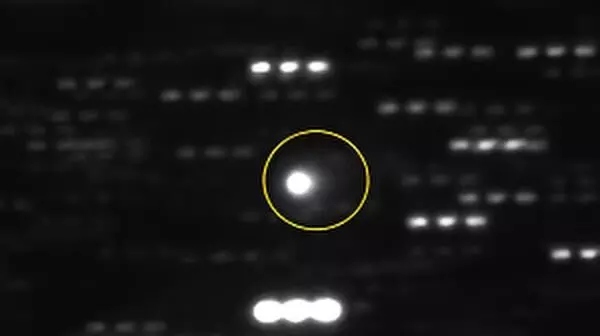Why Astronomers Call 3I/ATLAS a Rare ‘Black Swan’: Scientists Track Mysterious Interstellar Object for Possible Alien Link
Astronomers launch a global campaign to study 3I/ATLAS (C/2025 N1), a mysterious interstellar object showing unusual behavior. Learn why scientists call it a “Black Swan” and what they’re searching for.
3I/ATLAS: Scientists Track Rare Interstellar ‘Black Swan’ Object for Possible Alien Connection

The global astronomy community is turning its attention toward a rare cosmic visitor — 3I/ATLAS (C/2025 N1) — an interstellar object unlike anything seen before. The Minor Planet Centre (MPC) has launched an international observation campaign to study the mysterious object, running from November 27, 2025, to January 27, 2026.
🌌 What Is 3I/ATLAS? The Interstellar ‘Black Swan’
3I/ATLAS is the third confirmed interstellar object ever detected, following the famous ‘Oumuamua (2017) and Comet Borisov (2019). Unlike asteroids and comets that originate within our solar system, 3I/ATLAS entered from beyond — and it’s already challenging what astronomers thought they knew.
Researchers are calling it a “Black Swan” event, referring to a rare and unpredictable phenomenon with potentially massive scientific implications. The object is reportedly faster, heavier, and more active than typical comets.
Harvard astrophysicist Avi Loeb, known for his work on extraterrestrial technosignatures, said:
“Small-probability events must be considered carefully when their consequences could be large.”
He hinted that interstellar objects like 3I/ATLAS could even carry traces of alien technology — though no evidence yet supports that theory.
🔭 The Global Observation Campaign
The MPC’s campaign is being coordinated through the International Asteroid Warning Network (IAWN). It aims to:
- Improve astrometric tracking (the precise measurement of comet movement)
- Analyze gas composition and light emissions
- Identify any unusual or technological anomalies
- Before the observation window begins, a special training workshop will be held on November 7, 2025, to prepare astronomers worldwide for the task.
- Loeb emphasized the mission’s importance, noting:
- “Even if the odds of artificial origin are low, we must be ready. Observation and planning are crucial for understanding and mitigation.”
🚀 Could Humans Intercept 3I/ATLAS?
Currently, no spacecraft is capable of reaching 3I/ATLAS due to its extreme speed. Scientists, however, are planning to study it remotely — particularly during its perihelion (closest approach to the Sun) on October 29, 2025.
At that point, the object’s activity could reveal key data about its composition and possible origin.
Loeb even speculated that if 3I/ATLAS were an artificial “mothership”, it might release smaller probes using the Oberth effect — a maneuver that uses the Sun’s gravity to boost propulsion.
Interestingly, NASA simulations showed that the Juno spacecraft could have intercepted it near Jupiter under ideal conditions, offering a glimpse of what might be possible in future missions.
🌍 When Will 3I/ATLAS Pass Earth?
3I/ATLAS will make its closest approach to Earth on December 19, 2025. Experts confirm that it poses no physical threat, but its rare characteristics make it one of the most important cosmic events of the decade.
Loeb cautioned,
“Even though the likelihood of alien technology is small, the potential impact of discovery is enormous.”
To ensure no detail is missed, the Galileo Project and other observatories are tracking 3I/ATLAS around the clock.
🧬 Why 3I/ATLAS Is So Unusual
Astronomers have identified several anomalies that make 3I/ATLAS stand apart from any comet or asteroid previously observed:
- Its trajectory aligns unusually close to the solar system’s ecliptic plane — statistically rare for interstellar visitors.
- It exhibits an odd sunward jet, first seen in July and August, atypical for comets.
- It’s larger and faster than both Oumuamua and Borisov.
- Its gas plume shows a high nickel-to-cyanide ratio with very low water content (only 4%).
- Its polarisation readings are the highest ever recorded for such an object.
Each of these findings deepens the mystery surrounding 3I/ATLAS — and why scientists believe this “Black Swan” could reshape our understanding of interstellar phenomena.
🛰️ Looking Ahead
With global telescopes joining forces under the IAWN initiative, astronomers hope the next few months will unlock vital clues about the origins of 3I/ATLAS. Whether it’s a natural relic from another star system or something even more extraordinary, the upcoming campaign promises to be one of the most exciting astronomical investigations of the decade.

